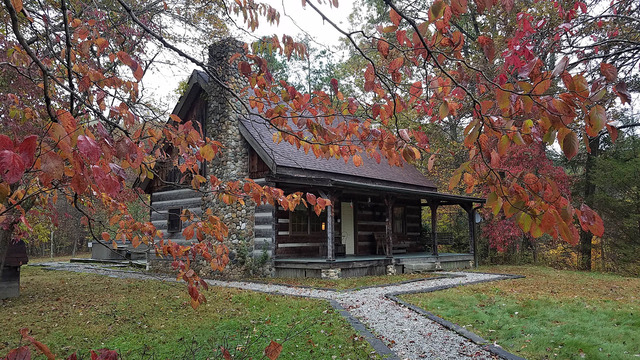SHAWNEE STATE FOREST
Once inhabited by the Shawnee Indians, Shawnee State Forest came into existence in 1922 with the purchase of 5,000 acres of land which had been cut over for timber and ravaged by fire. During that same year, land acquisition was begun for the Theodore Roosevelt Game Preserve. In the 1930s, six Civilian Conservation Corps camps were located in the forest. During this period, many of the roads were constructed in the then nearly inaccesible area. Many other accomplishments resulted, including five small lakes that were built to serve as water supplies for the camps. Following the creation of the Department of Natural Resources in 1949, the recreational facilities at Roosevelt Lake were transferred to the Division of Parks. The Roosevelt Game Preserve, by a 1951 agreement between the Division of Forestry and Wildlife, became a part of the forest. Shawnee State Forest, also called "The Little Smokies of Ohio," has developed into the largest of the 20 state forests, with over 60,000 acres. While the Forest is a fantastic recreation feature in Southern Ohio, you should not be surprised to see other activities occurring. The Forest is a working forest. It is managed to provide a variety of multiple uses on a sustained yi�eld basis. Timber harvesting, tree planting, wildlife habitat, forestry research, watershed and soil protection, and production of tree seeds are all in a day's work for Forest Employees and many local residents. During the spring and fall forest fire danger periods, state forest crews detect and suppress wildfires that occur on state and private lands within the surrounding protection area. Nearly 8,000 acres of the forest have been designated as wilderness. This minimzes human influence and allows the land to return to a natural condition. Timber management activities and public motorized travel have been eliminated in the area. In the mid-1800s and early 1900s, building stone was quarried from Vastine and Cabbage Patch hollows. The stone was moved by railroad to the Ohio River and loaded on barges. Much of the stone was used in the construction of buildings in Cincinnati.
GeneralLand, acres62,583
Nearby Wildlife Area, acres8,000
Day-UseHuntingyes
Backpack Trail, miles60
Bridle Trails, miles75
CampingHorsemen Campsitesyes
Walk-In Campsites, #8



